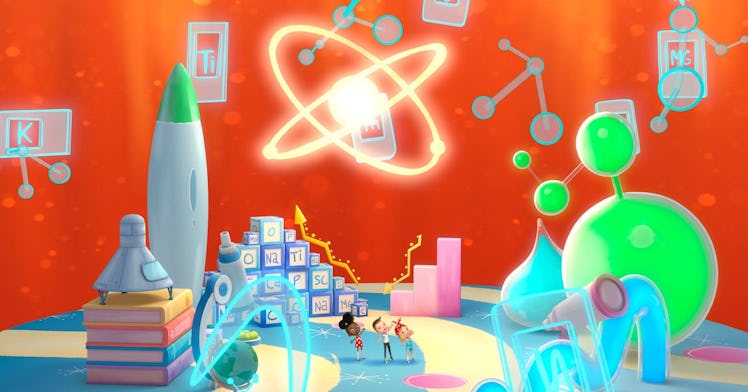‘Portable Planetarium’ Will Have Your Kids Seeing Stars (in a Good Way!)
This article was produced in partnership with Ada Twist, Scientist. Stream now, only on Netflix. ADVERTISEMENT Looking up at the night sky, pondering the expanses of the universe, is one of life’s simple pleasures. It’s also an incredible educational opportunity, a chance to for parents to talk about how sailors navigated in the pre-GPS era,... View Article

This article was produced in partnership with Ada Twist, Scientist. Stream now, only on Netflix.
Looking up at the night sky, pondering the expanses of the universe, is one of life’s simple pleasures. It’s also an incredible educational opportunity, a chance to for parents to talk about how sailors navigated in the pre-GPS era, the astrophysics of planets and galaxies, and the names of the various stars and constellations.
But if you live in or near a city or in a particularly cloudy part of the world, it can be tricky to see all that the heavens have to offer. Luckily, there’s a simple way to teach your kids the constellations, turning them into amateur astronomers, even if you don’t regularly have a great view of the stars.
Getting kids excited about science is also the goal of Ada Twist, Scientist, the Netflix animated series based on the blockbuster children’s book. It chronicles the adventures of a young Black scientist who stages experiments at home and uses scientific discovery, collaboration, and friendship to help others.
Ada Twist is a great way to get kids excited about science. And like the other Saturdays We S.T.E.M. activities, Portable Planetarium is a great opportunity for families to get hands-on experience by performing an experiment. Here’s how.
Prep Time: 5-10 minutes
Entertainment Time: 10-15 minutes
Energy Expended by Child: minimal physical, plenty of mental
What You Need:
- A flashlight
- Black foam sheet or thick black paperboard
- Scissors or a precision craft knife (the latter for use by adults only)
- An ice pick, small knife, awl, or similar hole-poking instrument (for use by adults only)
How to Play:
Use scissors to cut circles of the black foam or paperboard that completely cover the lens of the flashlight. It’s important that all of the light is blocked, so err on the side of making your circles slightly too big instead of too small. Cut one circle for every constellation you want to create.
Look up some constellations on the database maintained by the International Astronomical Union and pick out a few to include in your portable planetarium. Punch holes in each circle that correspond to the positions of the stars in each constellation.
Go to the darkest room in your home and turn off all the lights. Turn on the flashlight, point it at the ceiling, and put one of the circles directly onto the lens. The constellation will be projected onto the ceiling, hopefully prompting oohs and ahhs from your kids. Rotate through the other constellation circles you made, practicing identifying each constellation as you move through them.
Wrap-Up:
There are 91 constellations on the IAU website, so there are plenty you and your kids can create together. You can even turn identifying each constellation into a game, building up your kids’ knowledge of the stars and getting them excited to see the real thing when you get a chance to do some IRL stargazing.
Along with being lots of fun for parents and kids alike, Portable Planetarium is a great way to build up your child’s interest in the “S” part of S.T.E.M., putting you well on the way to raising your own Ada Twist.
This article was originally published on